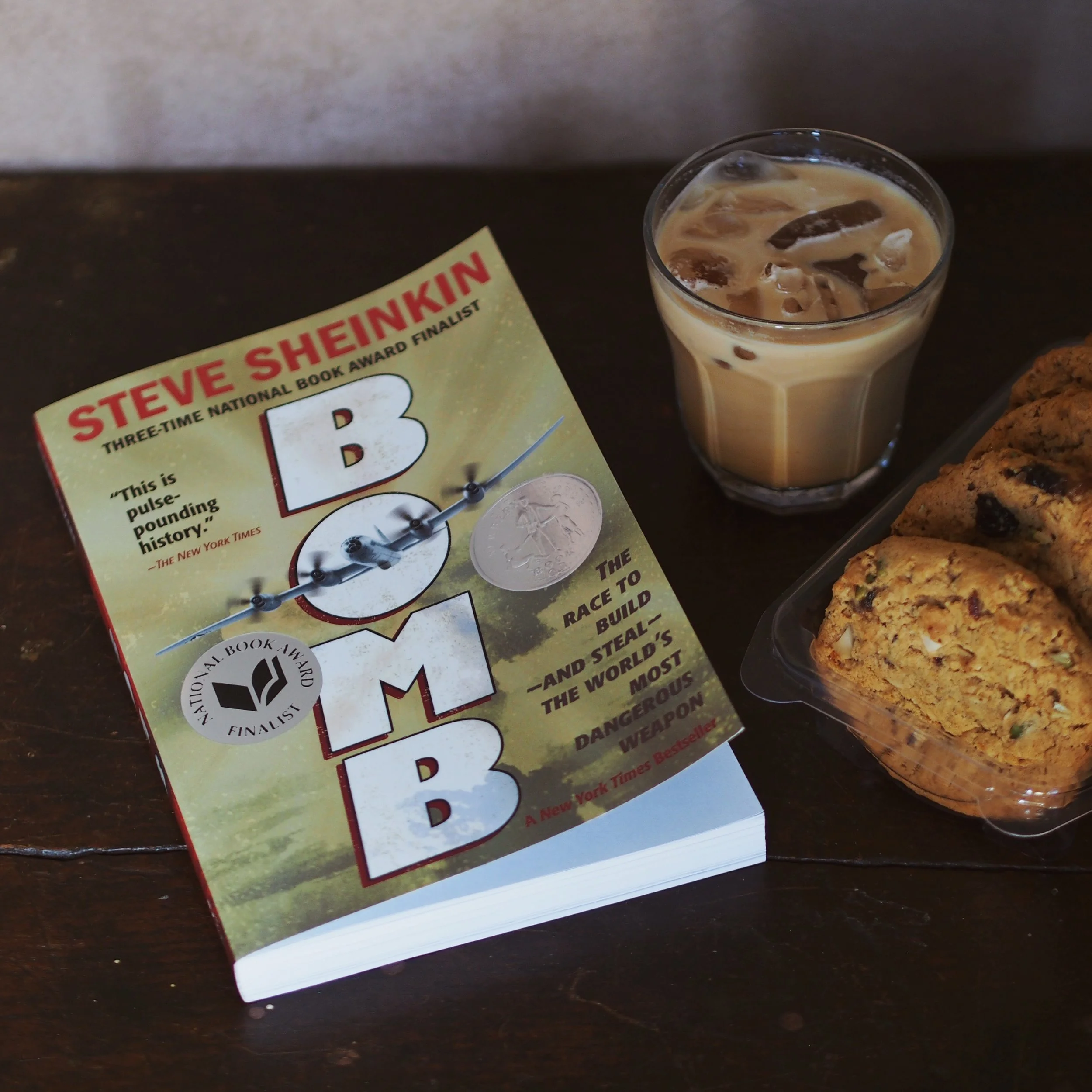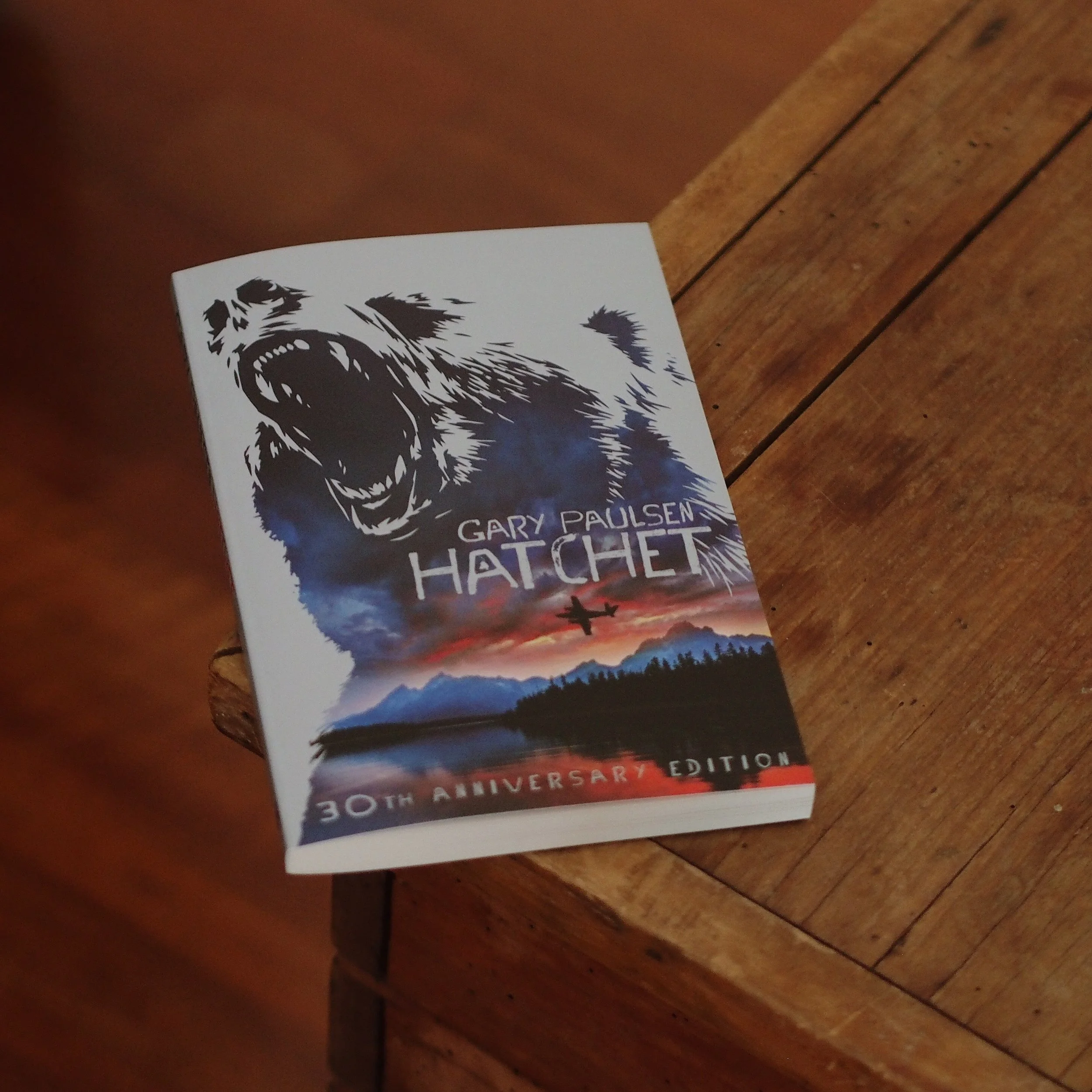Bomb: The Race to Build - And Steal - the World's Most Dangerous Weapon
A review of our February read:
From a picture book in January to exciting and meticulously-researched narrative non-fiction in February, The Newbery Project is looking happily varied in form and style this year so far. Bomb: The Race to Build – And Steal – The World’s Most Dangerous Weapon is a chunky name for a chunky book: almost 300 pages of crisply-articulated history detailing the development of the atomic bomb.
Steve Sheinkin was awarded a Newbery Honor for Bomb in 2013, along with a whole slew of other badges, including a YALSA Excellence in Nonfiction Award and a Robert F. Sibert Award. It’s not hard to see why. Bomb reads like a complex spy novel, flitting between nations and secret organisations, and compelled along by a sense of urgency, the inevitability of the ticking clock. The book’s cast of characters is huge but manages to maintain its connection to each with lively dialogue and tidbits that amuse and intrigue. Here is Roosevelt inviting Churchill to feel his biceps, in order to convince him of his fitness for the job at hand. And there is Albert Einstein, standing on the porch of a cottage as the Long Island breeze floats around him and whips at his loose trousers. It’s these pictures – as well as the actual photographs sprinkled throughout the text – that really bring the story to life, making this a perfect read for science buffs, history lovers, and anyone with a strand of nerd in their DNA. My only regret is that my reading was very slow and unsteady in February, and as a result my experience of this one was quite disjointed. It’s definitely a case of “it’s not you; it’s me,” however, as Sheinkin’s writing is highly readable and his research skills exceptional.
Discussion questions:
Respond to these questions here, use them in a discussion with your favourite young readers, or take them as jumping-off points for written responses in your homeschool or classroom.
What did you enjoy about Bomb? Did you know much about this topic before you began reading? What was the most surprising discovery you made?
The Newbery Award is given to American literature “for children.” This often means that books which win the award are written for a middle grade readership. Do you think Bomb works for this age group?
How was the format different to Newbery books you may have enjoyed in the past? Did you appreciate the interactivity of the text: the photographs, notes, and bonus materials?
What do you think of non-fiction winning an award that has, historically, most often been granted to fiction writing? Do you have strong opinions about this one way or another?
A work of fiction typically includes a character we can identify as the protagonist and someone as the antagonist or even the villain. Do you think Bomb follows this tradition? If so, who or what is the protagonist and who or what is the antagonist?
Extension Activities:
Creative Writing: Using Sheinkin’s Bomb as inspiration, write a piece of narrative non-fiction retelling a key moment in an historical event. Be sure to research beforehand, making notes of key events, people, and even actual dialogue in order to construct a narrative that is factually accurate but incorporates storytelling techniques.
History: Make a timeline poster of key events in the race to develop the atomic bomb.
Research and design: Choose a key character from Bomb and create an in-depth dossier of facts about this person. Research their life, their skills, their education, their experience, and the projects they were involved in. Then, use design skills (and inspiration from Bomb’s photographic double-page spreads) to create a World War II era file to house your research.
Persuasive speech: Write a persuasive speech or essay convincing a reluctant group to read Bomb. Imagine your audience as a book club or class which reads only fiction, and come up with persuasive reasons and effective strategies to challenge them to give this book a go.



